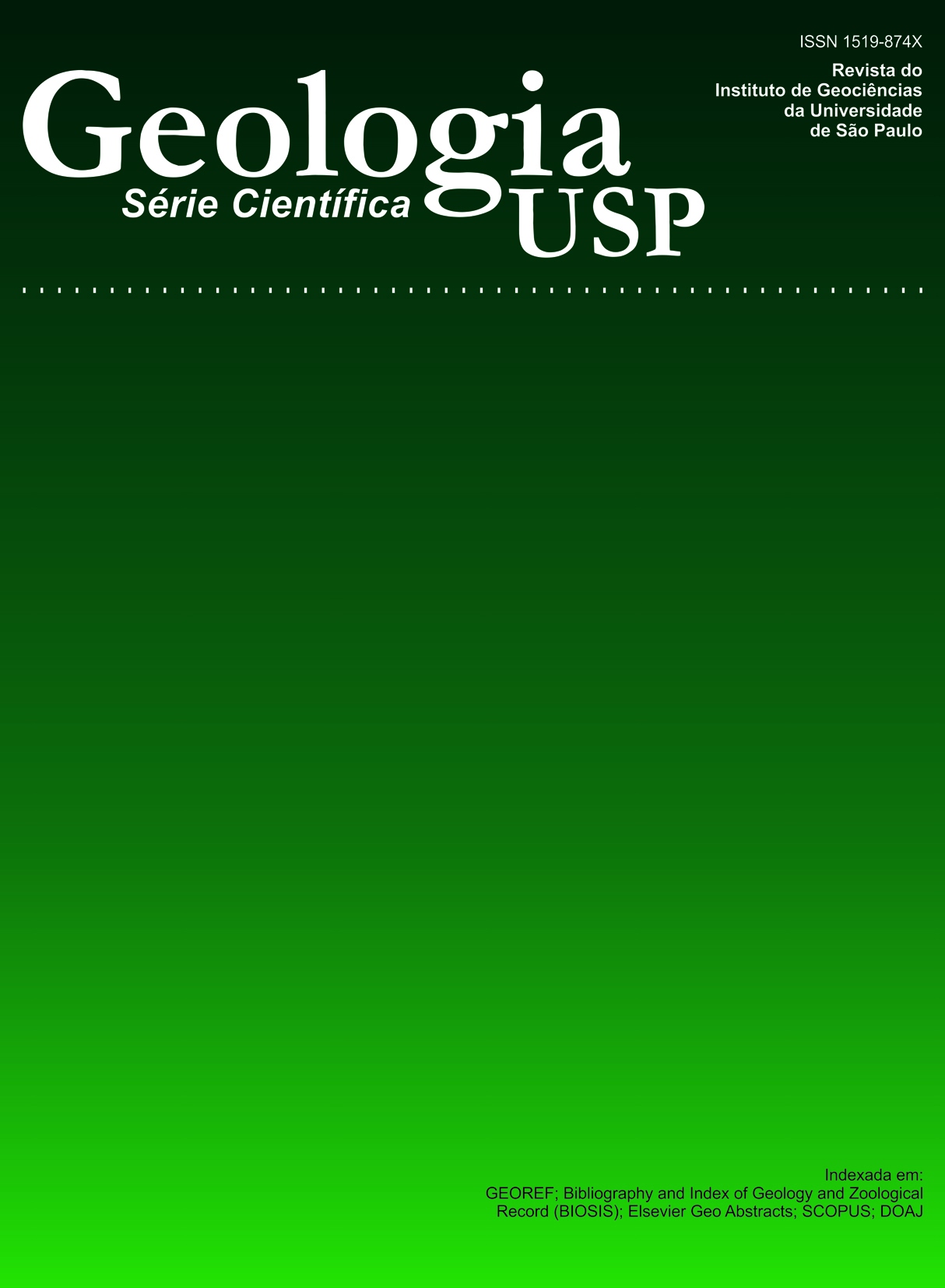New techniques applied to the U-Pb Method at the Centre for Geochronological Research of the University of São Paulo: Chemical Digestions, TIMS Mass Spectrometry and Examples of Integrated Application of SHRIMP
DOI:
https://doi.org/10.5327/Z1519-874X2008000200006Keywords:
zircon, geochronology, µHf, microwave oven, spike 205Pb, micro column, leachingAbstract
The present work describes new techniques of U-Pb ID-TIMS developed at the CPGeo-IGc/USP. Techniques of partial and total chemical digestions, U and Pb concentration using anion exchange in a micro column, and the utilization of a 205Pb spike are discussed. Main geochronological equations used are also discussed. Examples of the application of U-Pb data, obtained by leaching technique using a microwave oven in zircon with isotopic inheritances in the core and border, are presented. The genesis of zircon based on the initial 176Hf/177Hf ratio is discussed. Finally complete listings of the mathematical formulations used in the PBDAT software are given in the appendix.Downloads
Download data is not yet available.
Downloads
Published
2008-10-01
Issue
Section
Articles
License
Authors who publish in this journal shall comply with the following terms:
- Authors keep their copyright and grant to Geologia USP: Série Científica the right of first publication, with the paper under the Creative Commons BY-NC-SA license (summary of the license: https://creativecommons.org/licenses/by-nc-sa/4.0 | full text of the license: https://creativecommons.org/licenses/by-nc-sa/4.0/legalcode) that allows the non-commercial sharing of the paper and granting the proper copyrights of the first publication in this journal.
- Authors are authorized to take additional contracts separately, for non-exclusive distribution of the version of the paper published in this journal (publish in institutional repository or as a book chapter), granting the proper copyrights of first publication in this journal.
- Authors are allowed and encouraged to publish and distribute their paper online (in institutional repositories or their personal page) at any point before or during the editorial process, since this can generate productive changes as well as increase the impact and citation of the published paper (See The effect of Open Access and downloads on citation impact).
How to Cite
Sato, K., Basei, M. A. S., Siga Júnior, O., Sproesser, W. M., & Passarelli, C. R. (2008). New techniques applied to the U-Pb Method at the Centre for Geochronological Research of the University of São Paulo: Chemical Digestions, TIMS Mass Spectrometry and Examples of Integrated Application of SHRIMP . Geologia USP. Série Científica, 8(2), 76-99. https://doi.org/10.5327/Z1519-874X2008000200006





